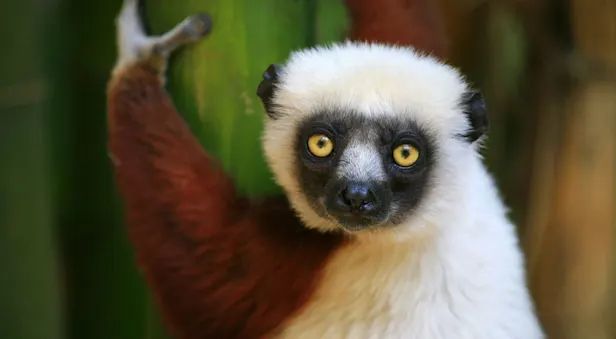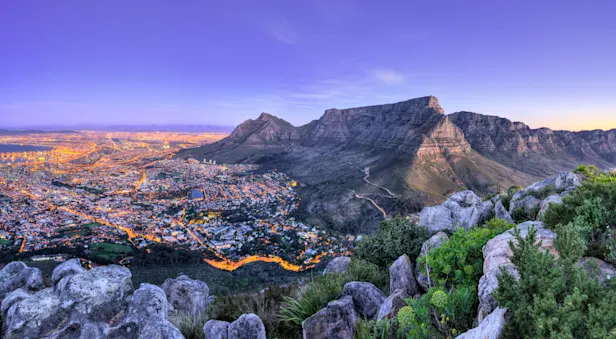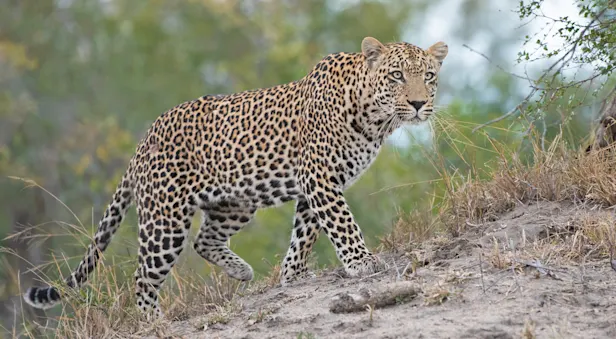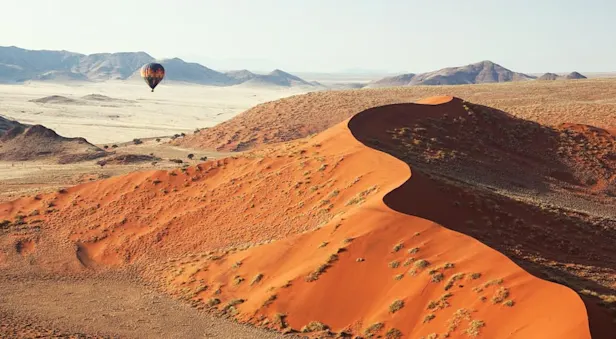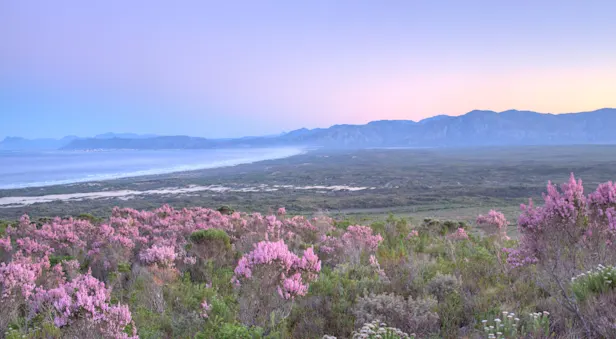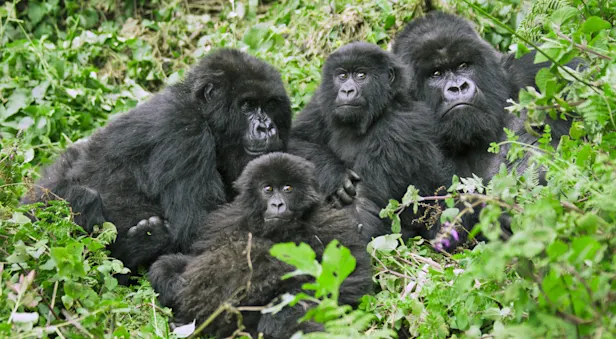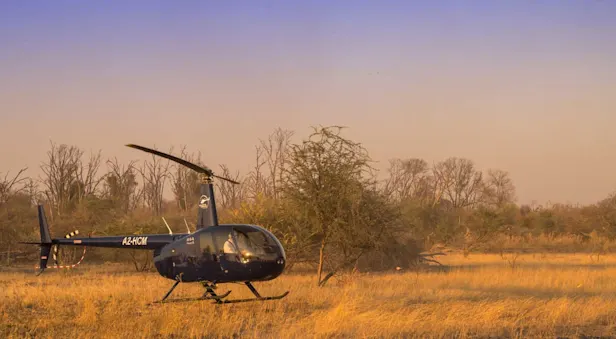Itinerary
Our Botswana safari begins just over the border in Livingstone, Zambia, where you are met on arrival and transferred to Toka Leya to spend the night. This luxury camp sits in a prime location overlooking the mighty Zambezi River upriver from Victoria Falls, surrounded by Mosi-oa-Tunya National Park, a UNESCO World Heritage Site. The park’s name means “The Smoke that Thunders,” and it’s an apt moniker, as we see mist clouds rising from the falls from miles away. Enjoy a classic sunset cruise before a welcome dinner with your Expedition Leader and traveling companions.
Our focus today is Mosi-oa-Tunya National Park with its centerpiece, Victoria Falls, which we explore on a guided walking tour along the rim this morning. The world's most astounding cataract, Victoria Falls spans more than a mile and plummets 350 feet into the Zambezi Gorge below, producing so much spray that the intense moisture has created a rain forest microecosystem on the rim. A network of walkways offers varying viewpoints over the falls, with exciting photography opportunities.
Next, we visit a nearby village to learn about the culture and daily life of the local people. Then, we head farther into the national park to look for white rhinos—our best chance to see them up close. This small but growing population currently numbers 10 individuals including calves. They’re carefully managed and protected from poaching by around-the-clock armed guards. Because predators do not live in the park, we approach the rhinos via a short walk through the diverse landscape, a combination of tall riverine forests, woodland and open grasslands. We’re likely to see elephants, giraffes, baboons, plentiful birds and zebra. But the true prize is encountering the placid rhinos, endangered icons of the African wild. During the excursion, we follow the rhinos' movements and observe their behavior as we learn about the critical conservation measures striving to bring this population — and the entire species — back from the brink.
Traveling by road, we cross the Chobe River into Botswana's Chobe National Park, famed for its vast elephant herds—a population that exceeds 70,000. On a private boat cruise down the river and its myriad channels, we sometimes see several hundred elephants in a single day. Waterbirds abound, including herons and storks, and hippos and crocodiles are on view along the muddy banks. Keep an eye out for egrets perched on the backs of elephants cooling off in the water.
This afternoon, fly to the private Linyanti Wildlife Reserve, some of Africa's most dramatic big-game country. Its tree-dotted plains are home to lion, leopard, spotted hyena and African wild dog, as well as enormous elephant herds. We expect to encounter wildlife in thrilling proximity along the Linyanti River and surrounding environs. In the evenings, relax at our secluded camp, where well-appointed private tents evoke a nostalgic era of safari travel. Through the thorny acacia branches overhead we see more stars than we ever dreamed of, scattered across an impossibly black sky.

After a final game drive in the wilds of Linyanti, transfer by light aircraft to the Okavango Delta, Earth’s largest inland water system. The delta’s headwaters lie in the western highlands of Angola, joining with other rivers in Namibia and Botswana to meet the Kalahari Desert, where a green oasis sprawls amid the sands and dry savanna. When rains create rising floodwaters, the delta is a vast network of waterways and islands that are home to a profuse collection of wildlife and lush vegetation.
Our exclusive safari camp is located in the heart of the Okavango Delta, surrounded by a maze of wetlands that sustain many rare birds. Look for the wattled crane, Pel’s fishing owl, jacana, rail, crake and moorhen. Following the reed-fringed channels, we may also spy water-adapted antelope such as red lechwe browsing in the grasses. Depending on water levels, we explore the constantly shifting marsh by mokoro, a traditional poled dugout canoe, offering a chance to observe wildlife at eye-level in complete quiet. We'll also hope to do a guided walk for an intimate perspective on the smaller wonders that surround us. Guests may add an optional 30-minute helicopter flight over the greater Okavango Delta (additional cost), with doors off for the most spectacular photography opportunities! Please note: Water levels and activities may vary based on fluctuating annual rainfall.
Fly by light aircraft to Nat Hab's Gomoti Camp—Okavango South in the heart of the Santawani Concession, a private community-owned reserve encompassing nearly 15,000 acres in the southeast corner of the Okavango Delta. Our intimate camp, isolated in the wild, offers a tremendous sense of seclusion. While some parts of the delta are permanently flooded, other habitats create a mosaic of varied landscapes, including drier regions like the area that surrounds our camp. A mix of dense riverine woodland, open savanna and acacia scrub provides ample food for a large array of browsers and grazing species, as well as predators including cheetah, leopard, lion and rare wild dog. The Gomoti River is a year-round lifeline for animals, while inland waterholes also sustain them during the dry season. The diverse range of habitats makes the Gomoti region ideal for all-day excursions, including traditional 4x4 game drives, picnic lunches and night drives in search of nocturnal species. During our stay in Santawani, we're joined by a local researcher to learn about studies on the wide range of predators in the area, including research projects on wild dog, cheetah and leopard.
Please Note: Some 2026 departures will stay at Nat Hab’s Sama Camp—Okavango North. The experience is comparable, but some activities may vary.
Our grand Botswana safari comes to a close as we depart by air for Maun to connect with homeward flights, or to continue with onward extensions.
Click here to view the seasonal variations of weather and wildlife viewing in Botswana.




















